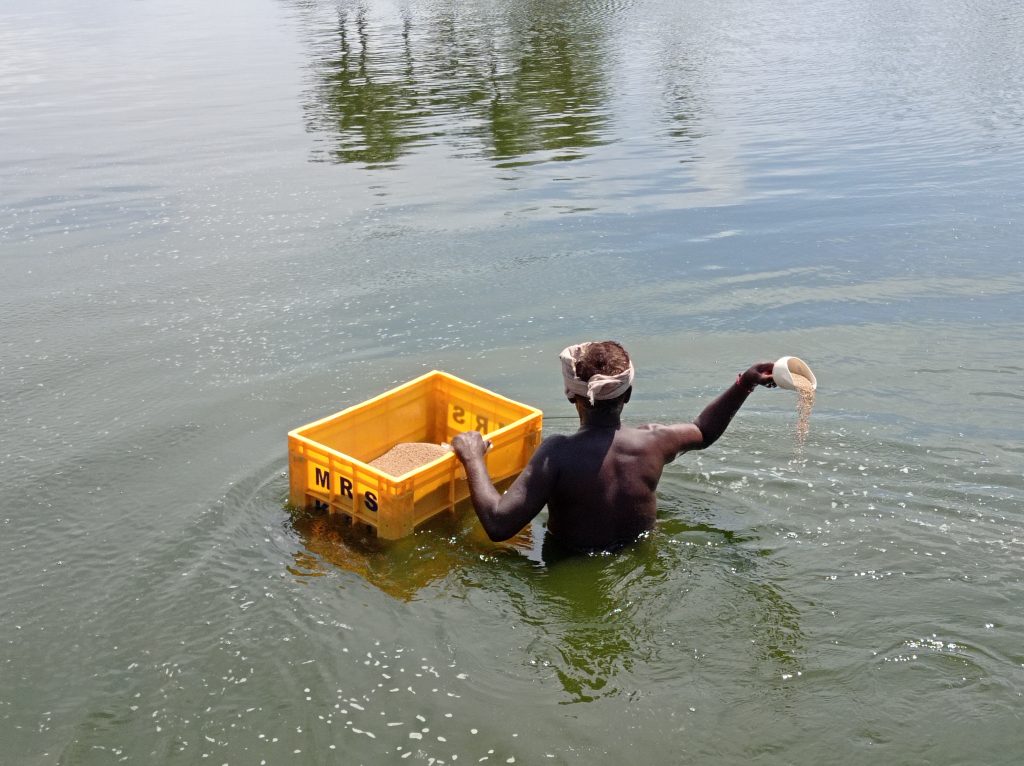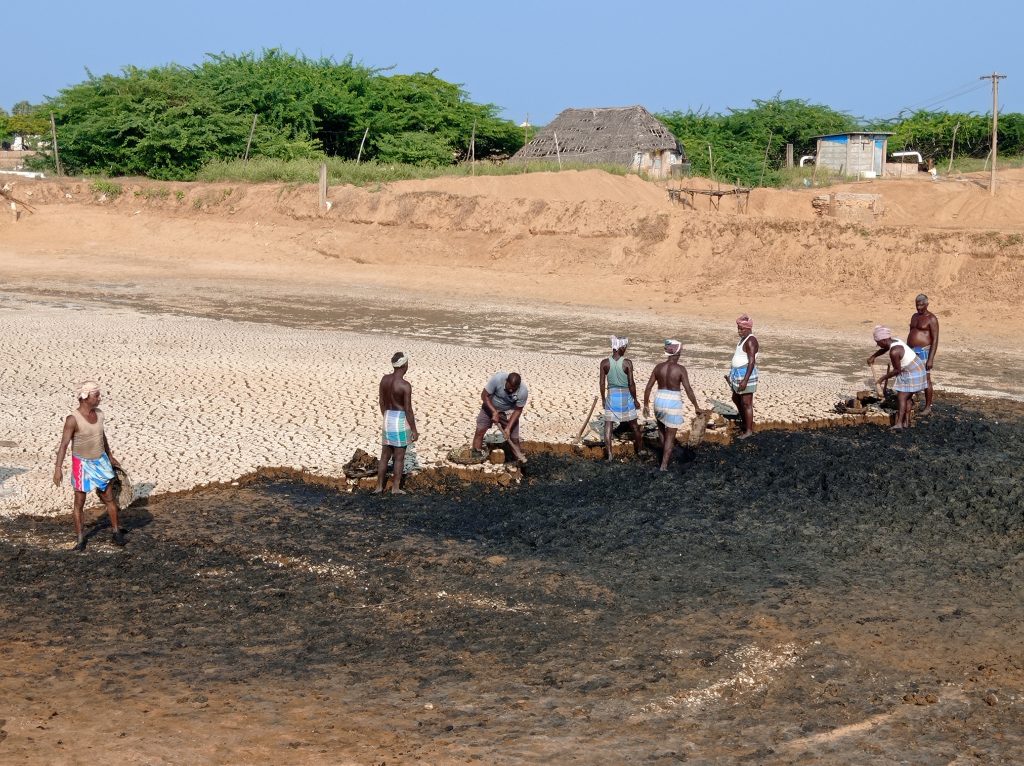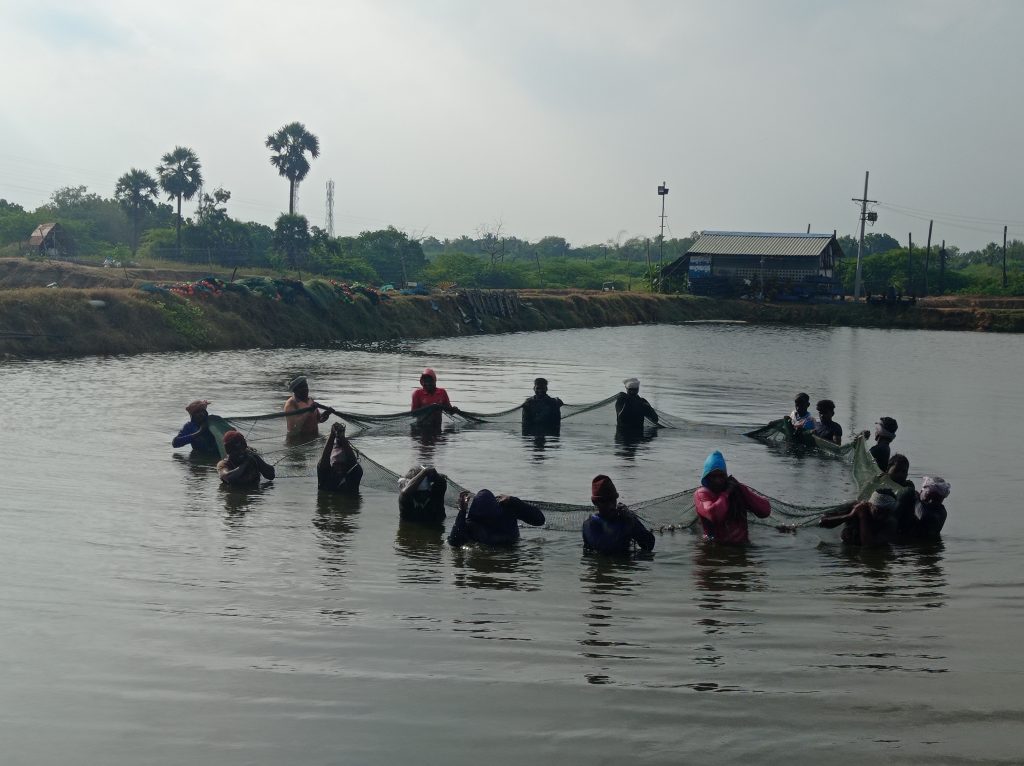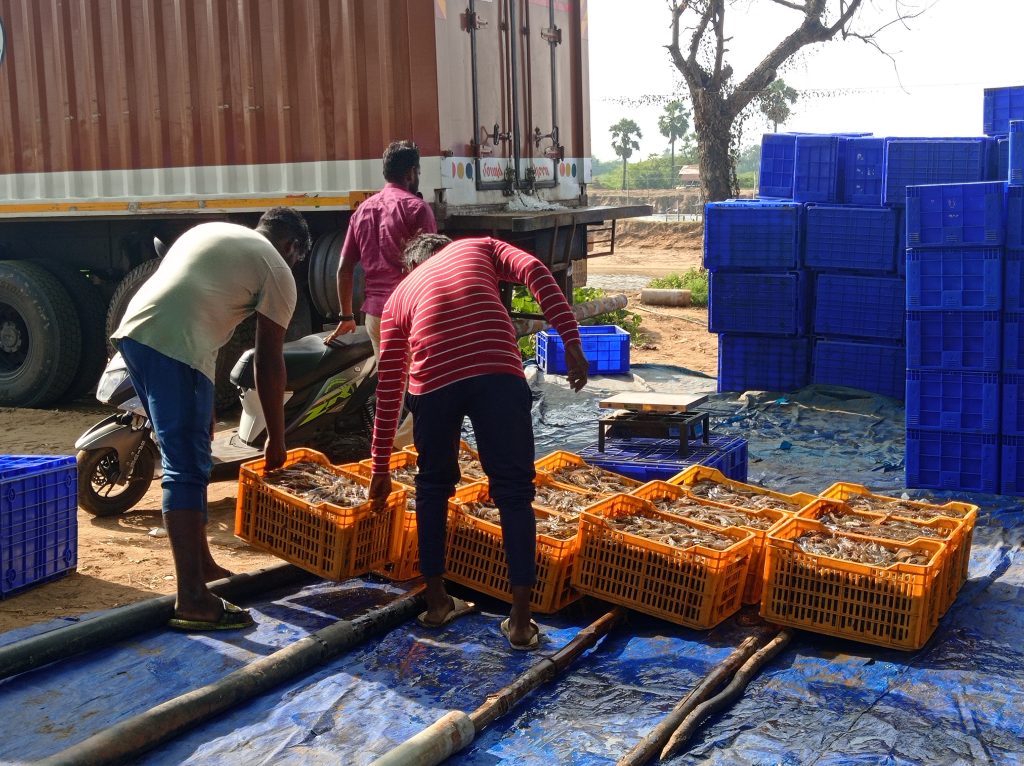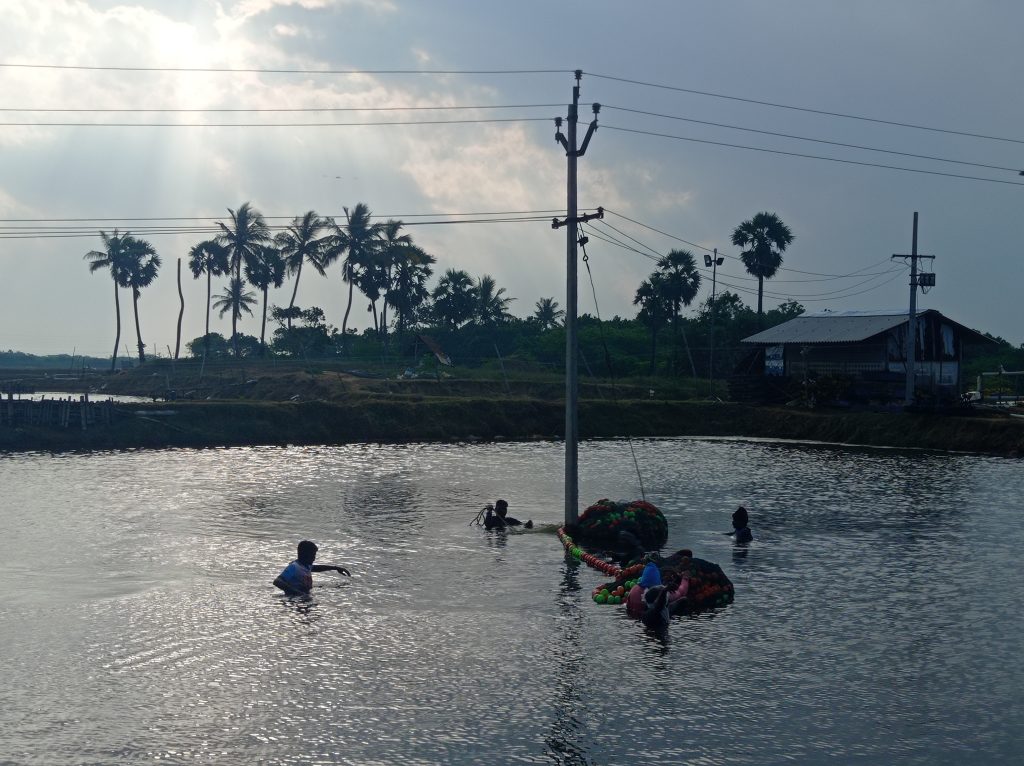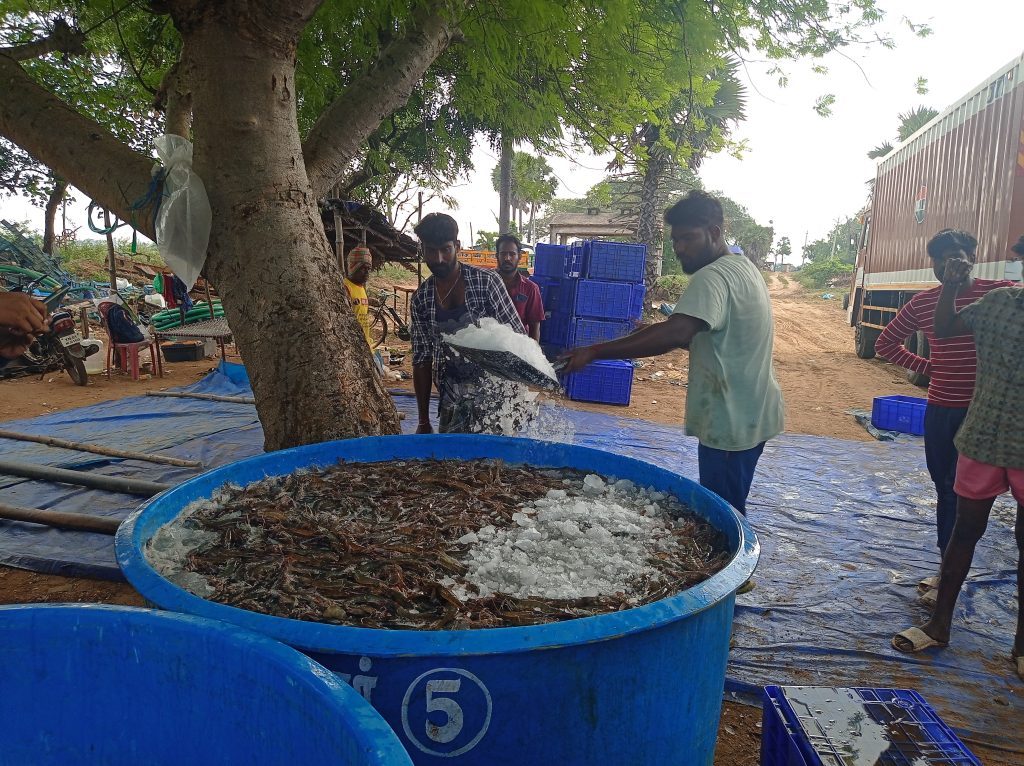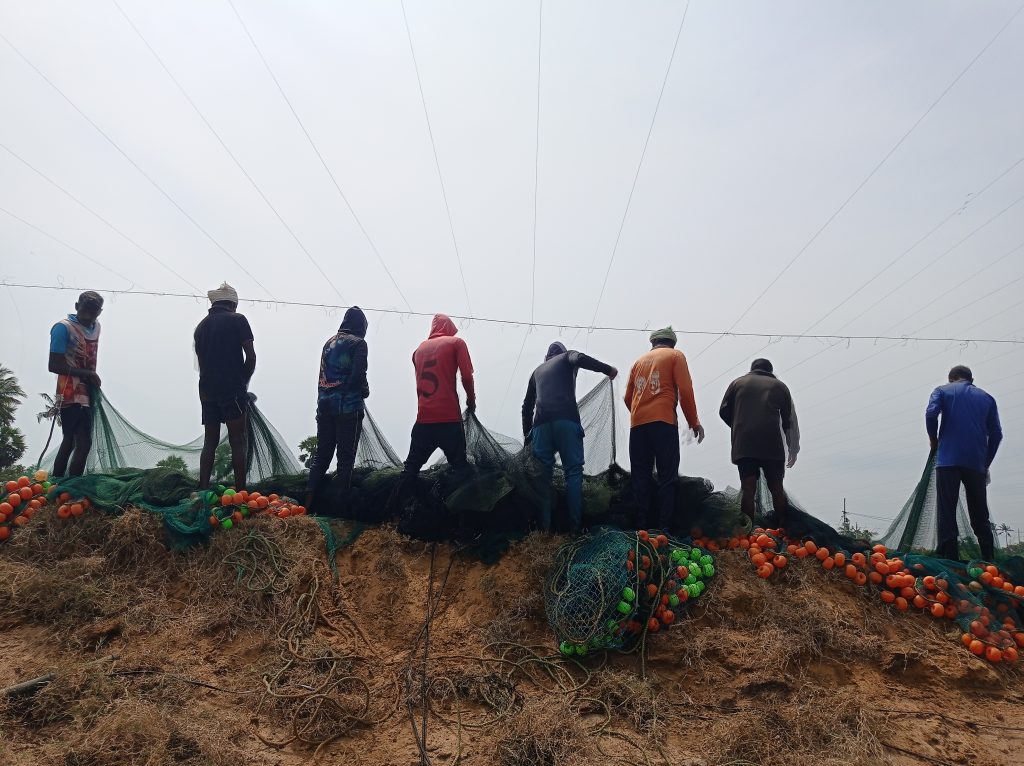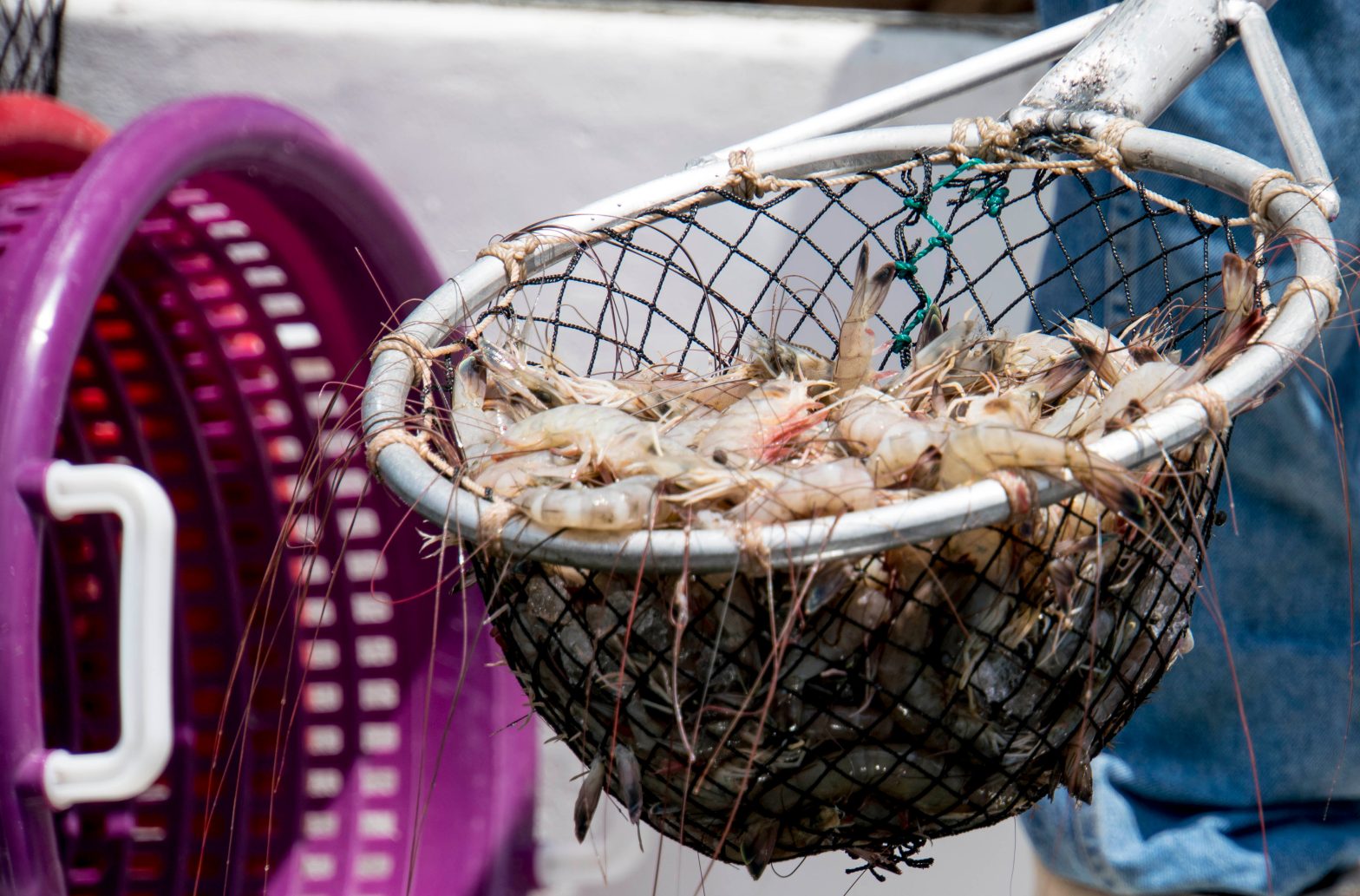
Shrimply Tamil Nadu
Does the sight of shrimp make you hungry? This photo walkthrough shows how shrimp farming is reshaping the environment, livelihoods and social relations in a coastal village of Tamil Nadu.
Sanker (name changed) is a foreman at a shrimp farm in Mayiladuthurai. He has spent the last 25 years of his life working with shrimp. The farm has 20 ponds of various sizes looked after by 14 permanent workers who earn Rs 650 a day. They are expected to be on the farm all day as shrimp require careful monitoring (Photo by Nagarajan R Durai)
Also Read | Fish on their plate, money in their wallet
Until the early 1980s, a coastal village in Mayiladuthurai was known for its groundnut and sesame cultivation. At that time fresh groundwater was said to be available within 20 feet. Due to the extreme summer in the late 80s and the prevailing Cauvery water dispute between Tamil Nadu and Karnataka, farmers started to rely extensively on bore water. This resulted in all bore wells within 3 kilometers from the seashore becoming saline, severely affecting agriculture (Photo by Nagarajan R Durai)
Also Read | Communities in Andhra Pradesh find success in inland fisheries
After the Poompuhar conference in 1993, the finance minister at the time, Dr Manmohan Singh, announced development packages to transform unutilised land into aquaculture farms. This attracted two companies – Spencer and Shriram – to set up large aquaculture farms in the village (Photo by Nagarajan R Durai)
Also Read | How pearl farms bring money to a parched village in Maharashtra
Sanker joined Spencer in 1996 and worked for three years in the hatchery unit until it liquidated. Then he worked at various shrimp farms in the village as a worker and a supervisor. “I belong to the land owning agrarian community. However, mere land ownership, experience and expertise isn’t enough,” Sanker said when asked why he does not do aquaculture himself. Salinization of land and water coupled with the strong emphasis on aquacultural activities forced people to convert their agricultural lands into aquaculture farms (Photo by Nagarajan R Durai)
Also Read | Same dam yields more fish through cage fish farming
As some agriculturists became shrimp farm owners, poor farmers with few resources became labourers here. So, shrimp aquaculture promoted a shift away from individual entrepreneurship in the form of agriculture towards wage employment in shrimp farms, a trend of fewer owners and more labourers (Photo by Nagarajan R Durai)
Sanker and his brother own 90 cents of family land in which they traditionally cultivated paddy. However, the yields are largely affected by the saline water intrusion. While Sanker continues to cultivate paddy on 30 cents of land, his brother has decided to convert the rest of the land into a shrimp farming pond. Today Sanker has little or no option – either sell his land to a shrimp farmer or do shrimp farming himself (Photo by Nagarajan R Durai)
Also Read | Rearing fish in farm ponds boosts rural incomes
“Our land becomes a mud puddle due to water scarcity. We’re all agricultural people. When our agricultural lands are converted into aquaculture farms, we adapt and equip ourselves to work in these farms. In agriculture there’s more labour and less wage. But in aquaculture, we’re paid enough for our labour. Though I like aquaculture, agriculture is what satisfies me,” Sanker concludes (Photo by Nagarajan R Durai)
Nagarajan R Durai is research assistant at the Centre for Socio-economic and Environmental Studies.
Lead image by Lynn Studios (Shutterstock)
